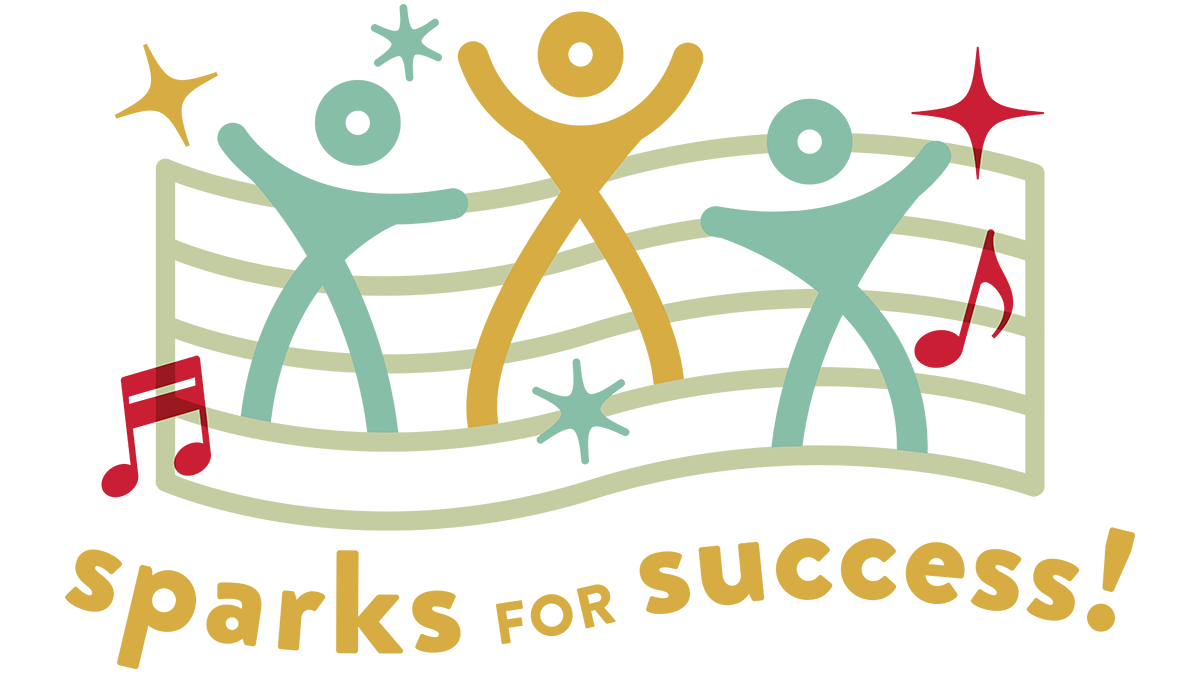
March is a musical month! Not only is National Music Month celebrated in the United States, but it is Music Therapy Month in Canada.
With this theme of music in the air (or at least in North America 😉), Sparks wants to highlight some of the distinctions between music therapy and music, as well as aspects of music therapy that benefit our students. Also, you’ll find a playlist of some songs our therapists use with our students!
Music therapy is distinct from music in a few ways
Music therapy helps clients accomplish non-musical goals.
Areas of development or functioning considered during sessions include cognitive, communication (verbal and non-verbal), physical, emotional, social, and spiritual domains. For example, a Sparks therapist might do a fill-in-the blank song activity, where students listen to a song and insert the emotion mentioned in the song. For example: Pharrell Williams’ song “Happy” might have the lyric as “Because I’m _______, clap along if you know what ________ is to you.” The missing words would be “happy” and “happiness”, respectively.
By identifying and verbally stating the emotions they notice, Sparks’ students are learning to use their left brain to think about and regulate their emotions, which are primarily located in the right brain, instead of impulsively reacting. So the next time they get upset at another student, instead of hitting them, they can identify that they are feeling angry and realize they need to take a few minutes to calm down before responding to the student who was upsetting them.
Music therapy is a mental health profession requiring advanced training and board certification.
Music therapists are psychotherapists who are trained in both playing a musical instrument (or singing) and in using music to help clients heal and grow from a variety of issues. They must practice and attain at least 1,200 hours of hands-on clinical work, including practicum and internship experience, prior to sitting for a rigorous board examination. Musicians practice their instruments over the course of many years to gain proficiency, but they do not intend to facilitate any particular form of healing or growth for their listeners.
Music therapy is more than just an enjoyable activity.
While music by itself can be therapeutic due to the sounds and rhythms that people enjoy listening to, music therapy is very distinct from music for the sake of enjoyment. An example of music therapy at work with Sparks’ kids is the therapist using a distinct, patterned rhythm or set of movements to shift the group’s emotional state from more excited to calmer and more focused. Using the song “Shake My Sillies Out” (by Raffi), the group might “shake their sillies out” for 10 seconds, before the song transitions to having them “clap their sillies out” and then end with “yawn their sillies out”.
What are some of the songs Sparks’ therapists have used?
While most of these songs are not specifically “therapeutic”, they are used in various ways by Sparks’ board-certified music therapists to help our students develop social emotional skills such as taking turns, active listening, or impulse control.
Shake It Off – Taylor Swift
Count on Me – Bruno Mars
30 Second Dance Party
Skating – Stephanie Leavell
Believer – Imagine Dragons
It’s Okay Not to Be Okay – Rachel Rambach
Sparks’ students greatly benefit from music therapy – it connects them to themselves and each other in ways that regular therapy and even regular music cannot do.
Want to give the gift of healing to our students through music therapy?

